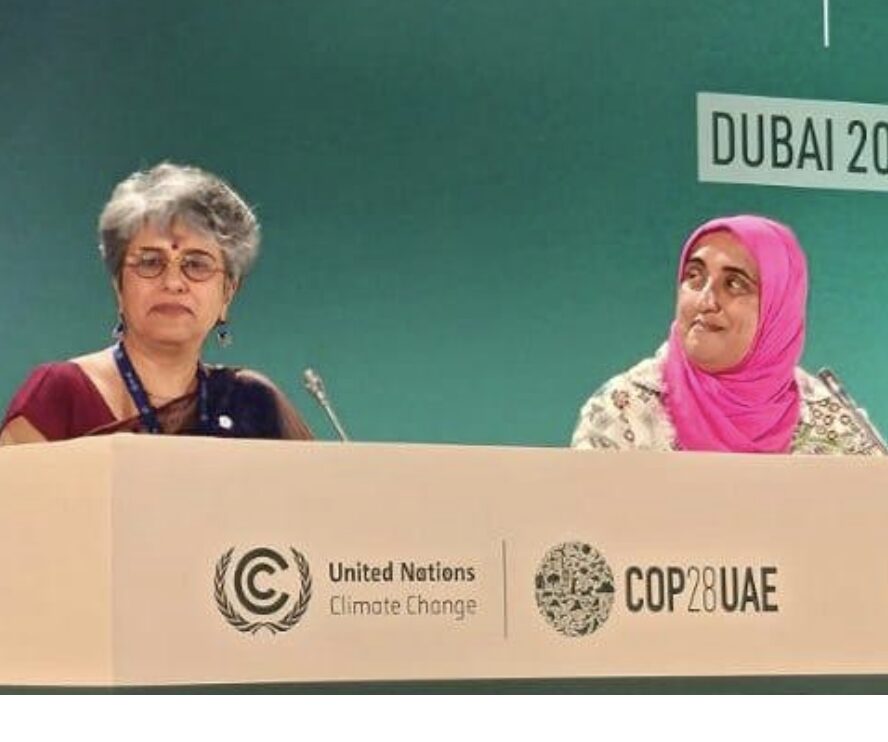CDKN’s CEO reacts to the COP28 outcomes

CDKN’s CEO, Dr Shehnaaz Moosa, reacts to the outcomes of COP28, which concluded on 13 December 2023 in Dubai, United Arab Emirates. This blog post was originally shared by CDKN on their website.
While after many decades of climate negotiations explicit reference to fossil fuels have finally made it into COP outcomes, the COP28 Global Stocktake is far from a rousing call to action or a document deeply committing us to tackle the climate crisis.
The COP28 deal highlights the danger of the world’s situation by the references to the IPCC science and especially the rapidly diminishing carbon budget to keep 1.5℃ or 2℃ in sight (noting the IPCC’s Sixth Assessment Report is already over two years old and the carbon budget diminishes by the day).
The text on mitigation and finance, however, falls far short of what science calls for, and leaves the door open for the weakest of interpretations at national level.
(There are more hopeful signs for the just-agreed framework for a global goal on adaptation (GGA). Read CDKN’s reflections, where Mairi Dupar shares her hopes that it has the potential to galvanise the action and investment on adaptation so urgently needed.)
On mitigation, the COP28 outcome only calls on countries to ‘contribute’ to a range of emissions-cutting or avoidance measures (para 28). It includes worryingly weak language on fossil fuels (only phasing down ‘unabated’ coal, not phasing it out) and ‘transitioning away from fossil fuels in energy systems’, toward net zero by 2050. This language leaves wide open doors for continuing fossil fuel pollution and puts hopes into technologies for carbon capture and storage (CCS), which are unproven at the commercial scale that would make a significant difference to global emissions.
We welcome the strong focus on action on methane in the text, a deeply potent greenhouse gas, as well reference to sister convention, the Convention on Biological Diversity (CBD) (although, we note, the text is restating existing commitments on ecosystems and not adding anything substantial).
However, there is also disappointing fragmentation in the text: There is attention to halting deforestation and forest degradation (reflecting the Paris Agreement itself) and a reference to coastal marine systems. The latter language on ocean-based mitigation lacks environmental safeguarding language that is sorely needed to avoid maladaptive measures. Yet the role of food systems transformations in climate change mitigation is not mentioned despite the role of fossil-fuel based synthetic fertilisers and of food systems inefficiency and wastage in driving greenhouse gas emissions.
Of course, as well as the political interests at play in these talks, which weakened the strong mitigation language the most climate-vulnerable countries hoped for, the lumbering UNFCCC machinery also blocked progress. The finance language restates existing commitments. It talks in general, but vague terms about ramping up, but has no bite. The reality is that donor countries have dug in their heels and are waiting for the longer running New Collective Quantified Goal (NCQG) process to play through 2024.
The embarrassingly low contributions made to the new Loss and Damage Fund by countries such as the USA demonstrate just how far and how fast we need movement on finance. Moreover, while the language of ‘transitioning away from fossil fuels in energy systems in a just, orderly and equitable manner’ recognises the different transition paths of developing countries – dependent on fossil fuels for much-needed energy, livelihood and income – the deal does not require richer nations to provide the finance for their equitable transition to occur.
On financing adaptation, even if existing commitments are kept to double adaptation finance by 2025, it will be far too little (the Adaptation Gap Report 2023 highlights it will only fill 5-10% of the gap) and those hard numeric targets across mitigation, adaptation and Loss and Damage are critical to set the bar high and increase accountability. Like so many COPs, this one seems to leave the world hanging with many tougher decisions kicked down the road.
(0) Comments
There is no content